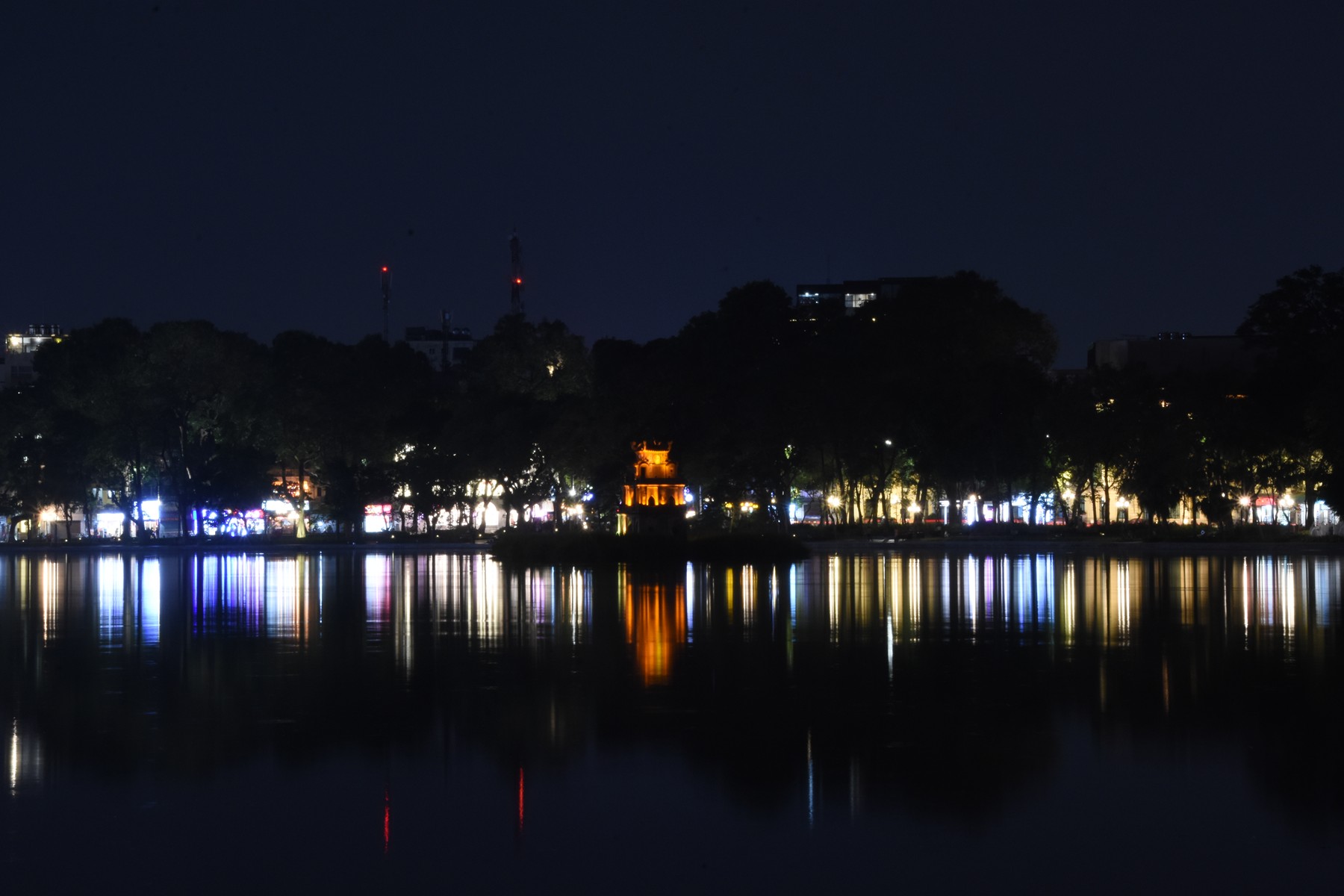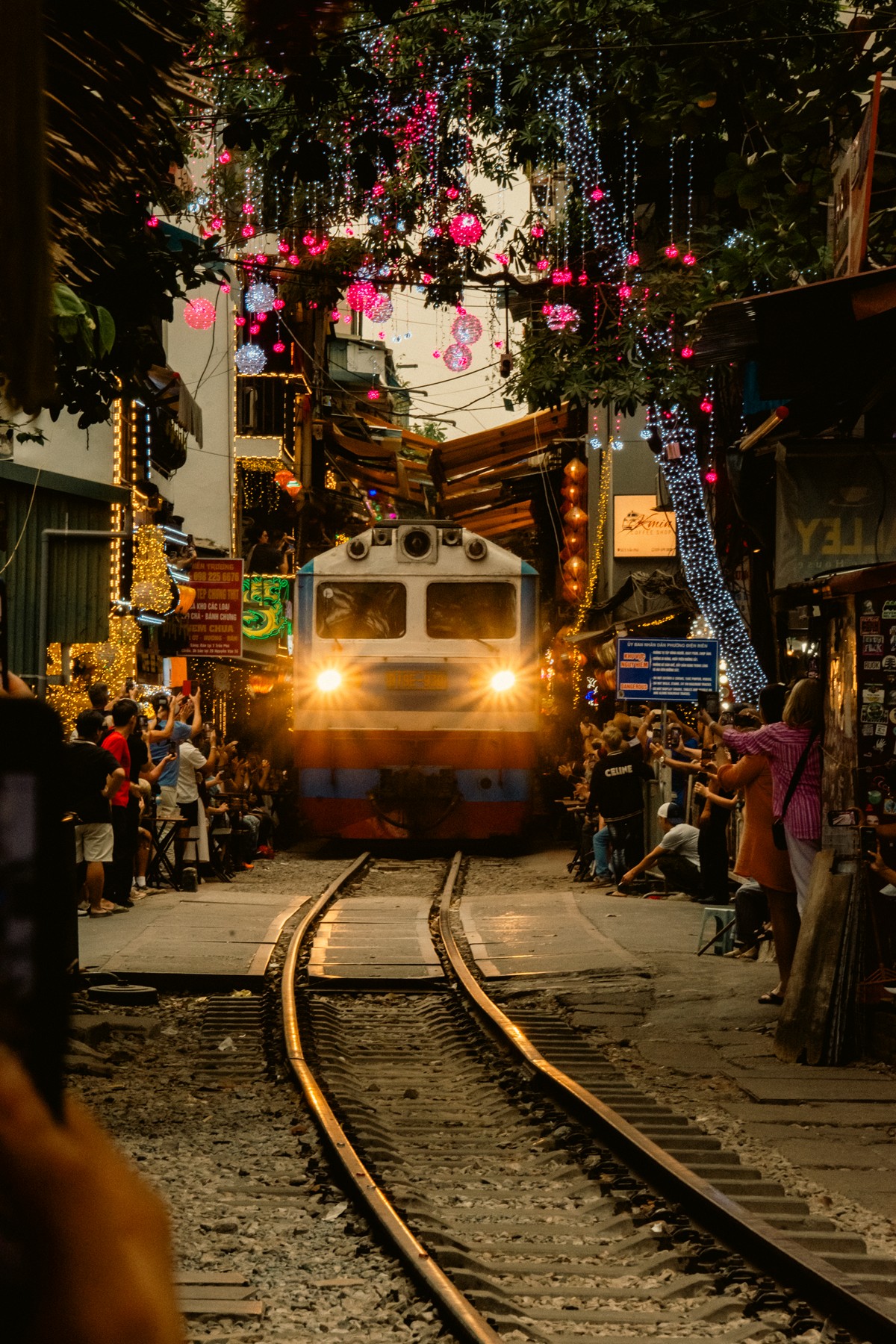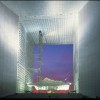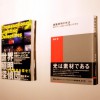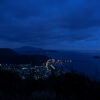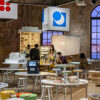2024.11.21-24 Chuanyi Liu + Jiang Kunzhi
Hanoi, the capital of Vietnam where history and modernity blend seamlessly. Thanks to its rich cultural heritage, it has established itself as one of Southeast Asia’s premier tourist destinations. In this city where the Old Quarter, St. Joseph’s Cathedral, and Lotte Tower coexist, we explore Hanoi’s nightscape culture through the lens of light.

Vietnam, a populous nation of 100 million people, has Hanoi as its capital serving as the political, cultural, and economic center as well as a key transportation hub. In July 2020, the Vietnamese government issued Decision No. 1129, promoting the development of the night economy and designating Hanoi as the pilot city for this initiative. The city’s rich heritage and unique cultural arts provide favorable conditions for the growth of Hanoi’s night tourism.
Hanoi’s urban lighting exhibits distinct characteristics depending on the area and function. In the Old Quarter, narrow alleys and historic buildings create a lively atmosphere with bustling night markets. The nighttime lighting here mainly consists of creatively designed decorative lights at individual shops, which enhance the vibrant energy. Around Hoan Kiem Lake, soft lights reflected on the water’s surface and the illumination of the Turtle Tower standing in the lake harmonize to create a calm and serene nightscape. In the new urban area, modern building facades and bright LED lighting present a contemporary and sophisticated city image. Dynamic light displays further emphasize the lively spirit of the area.
Night markets and commercial districts frequented by tourists are filled with Hanoi’s characteristic vibrancy and energy. Colorful neon signs, billboard lighting, and various decorative illuminations light up the streets, symbolizing the dynamism of Hanoi’s night economy. However, in some areas, concerns arise over visual fatigue and light pollution caused by high-intensity signage and excessive decorative lighting. The following sections provide a detailed analysis by district. (Jiang Kunzhi)
■ Train Street
Hanoi’s Train Street is a unique tourist spot where a train passes through a narrow alley. During the daytime, Train Street stands out as one of the most down-to-earth places in the Old Quarter, known for offering visitors a close glimpse into the daily lives of local residents. On both sides of the
tracks, houses and cafes line the street, allowing tourists to experience the locals’ distinctive lifestyle up close. The natural light harmonizes with the street’s decorations, and the sunlight streaming onto the rails creates a special atmosphere found only here. While the lively vibe is palpable, safety concerns remain due to the narrow street where an active railway still runs.
The nighttime lighting on Train Street mixes high color temperatures, low color temperatures, and even RGB lights. The overall color temperature is approximately 5000K, with the main light sources coming from decorative lights installed at cafés and street stalls along the route. Neon signs, lanterns, light boxes on shop signs, and small dot lights hanging from trees illuminate the street, providing both functional and decorative lighting. However, many of these decorative lights are simply constructed, often using bare bulbs directly exposed. Overuse of lighting is also noticeable. Compared to surrounding streets, Train Street is overwhelmingly brighter, and the strong contrast in brightness creates a striking visual impact. This interplay of light and shadow gives the nightscape of Train Street its distinctive character, making it a uniquely attractive spot. (Jiang Kunzhi)
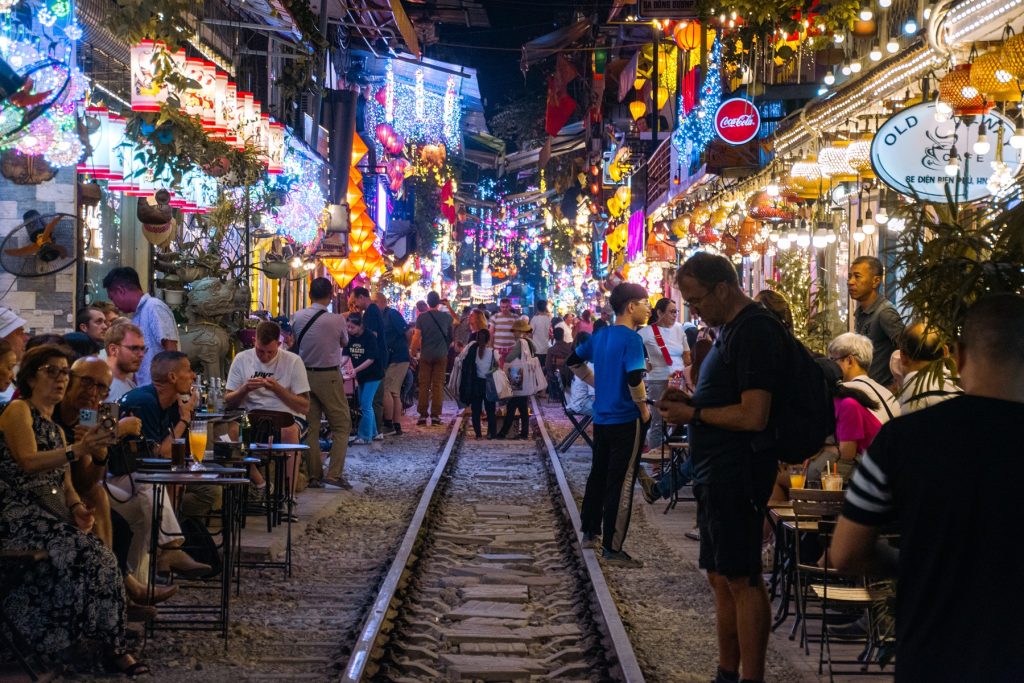
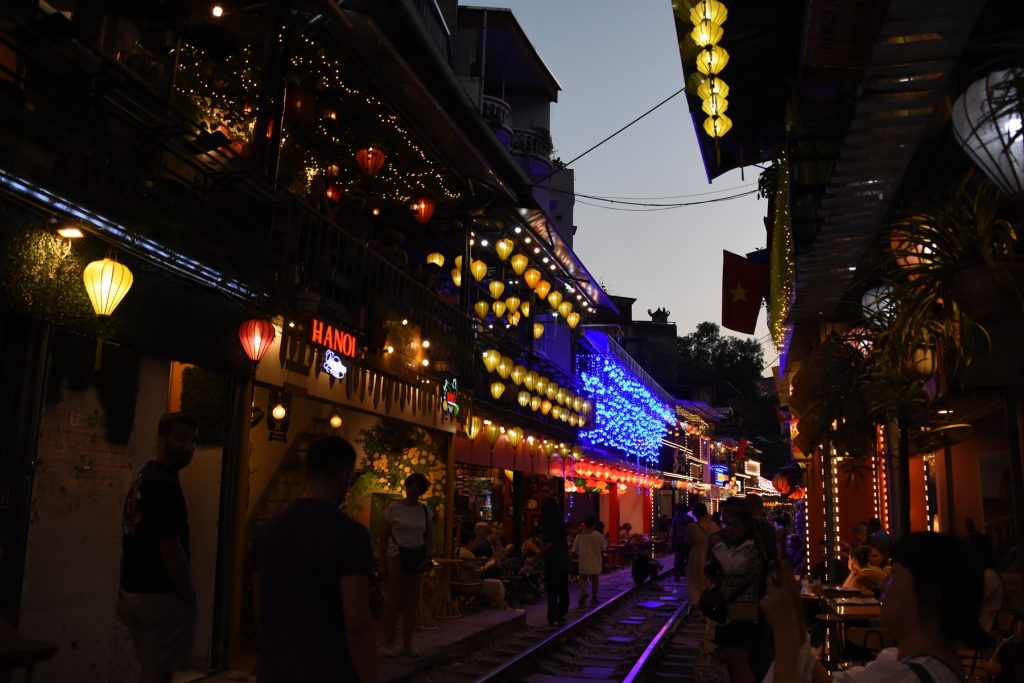
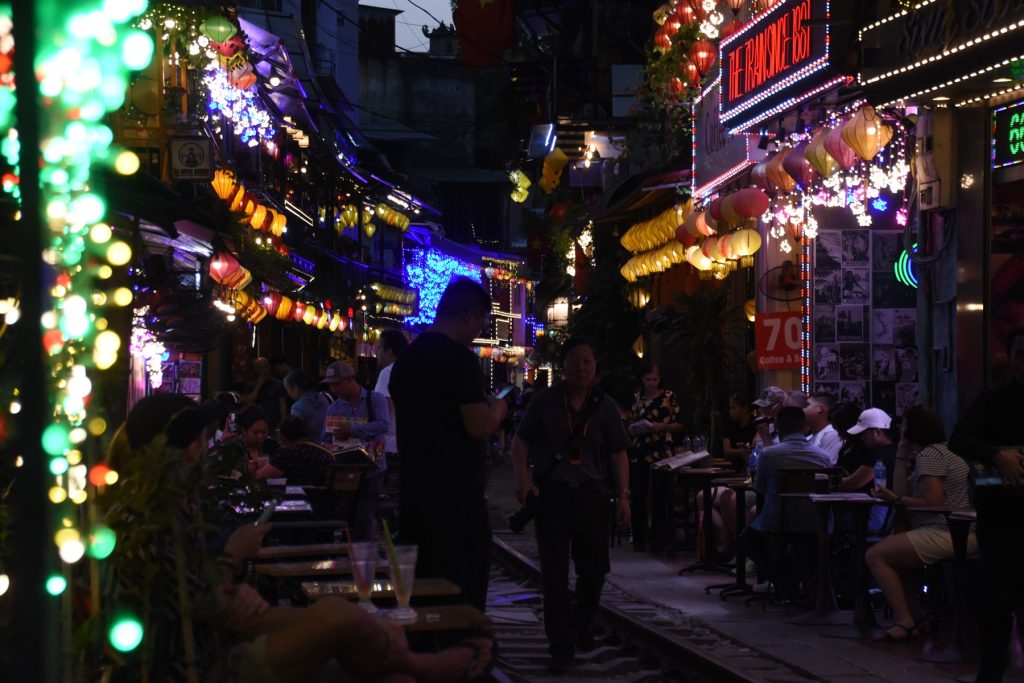
■ Old Quarter
The Old Quarter by day is known for its narrow alleys and traditional architecture, encapsulating the history and culture of Hanoi. The streets are lined with shops selling traditional crafts, clothing, and Vietnamese cuisine, offering visitors a rich experience of Vietnam’s unique atmosphere. Bathed in sunlight, the vibrant streets convey the distinct cultural charm of Hanoi, pulsing with a rhythm all its own despite the apparent chaos.
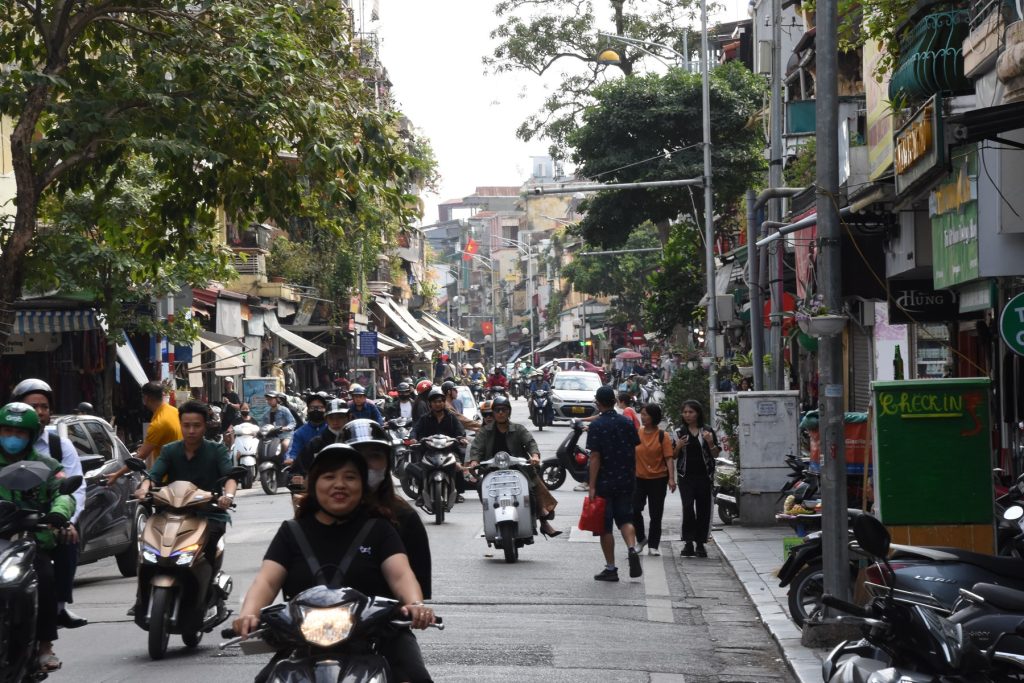
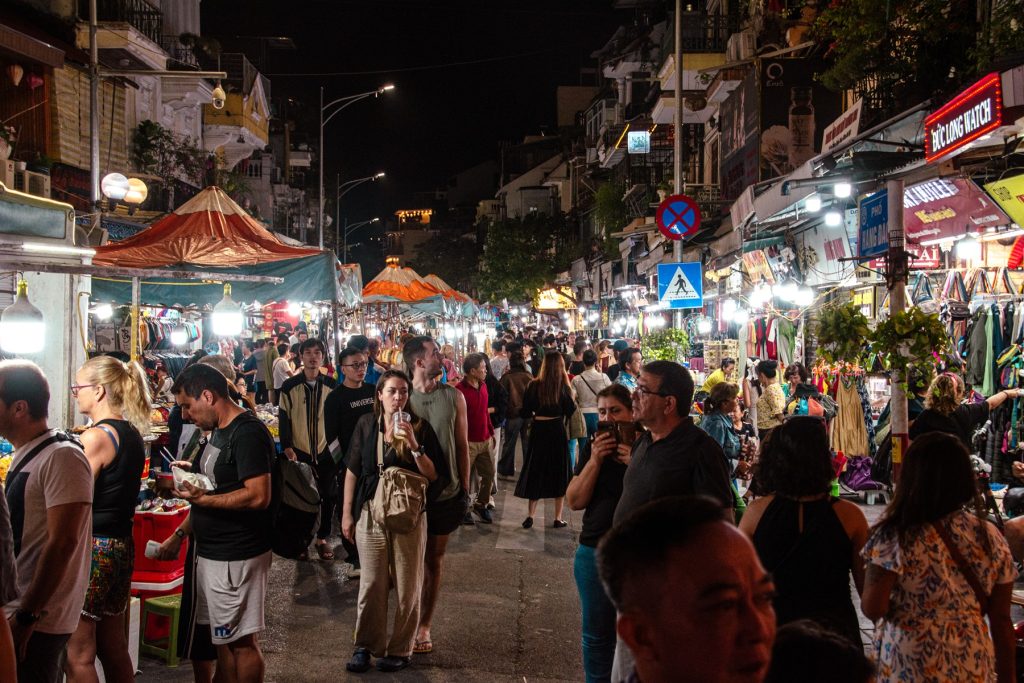
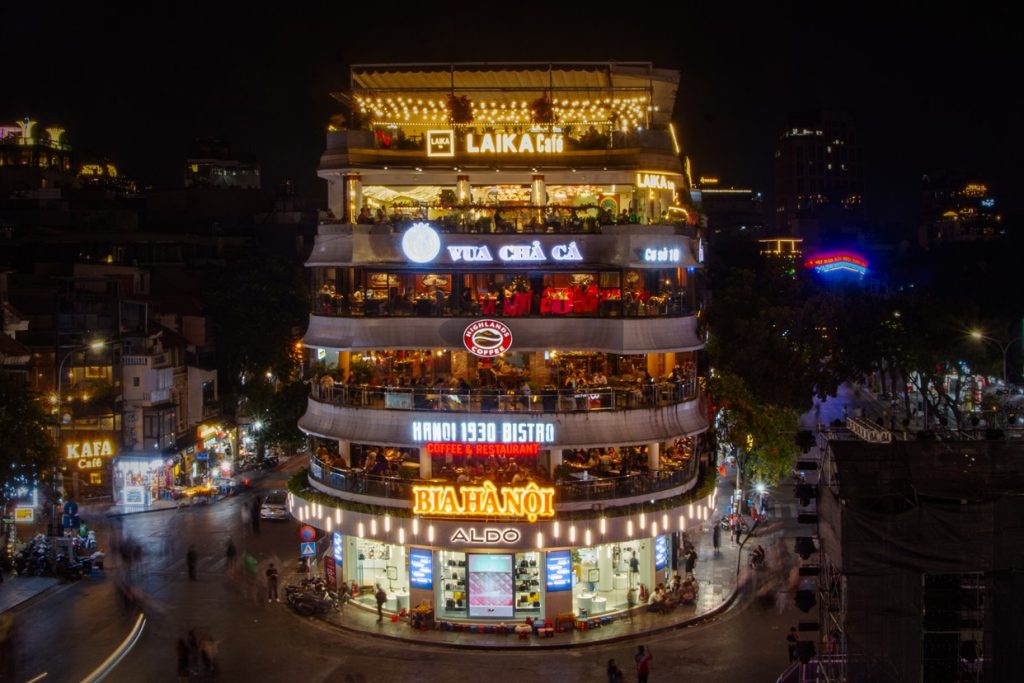
■ New Urban Area
The New Urban Area showcases Hanoi’s modern side with a sophisticated cityscape. Spacious roads and glass-covered high-rise buildings line the streets, where natural light reflects off glass surfaces, creating depth in the architecture and enveloping the entire area in a bright and refreshing atmosphere.
At night, cool-toned façade lighting further emphasizes this modernity. Dynamic lighting effects skillfully blend with building lines, giving the structures a sense of motion. However, some buildings lack thoughtful lighting design, with visible issues such as broken fixtures and insufficient maintenance. Variations in color temperature also disrupt the overall cohesion of the nightscape.
A landmark of the New Urban Area, Lotte Tower serves as a nighttime focal point through its dynamic lighting and vibrant color changes. The tower’s crown lighting vividly colors the night sky and draws the gaze of onlookers. Yet, maintenance shortcomings cause some lights to be out and inconsistencies in color temperature remain issues to address. The nightscape viewed from Lotte Tower’s observation deck symbolizes Hanoi’s energy and prosperity, spreading out like a shimmering sea of lights across the city. (Chuanyi Liu)
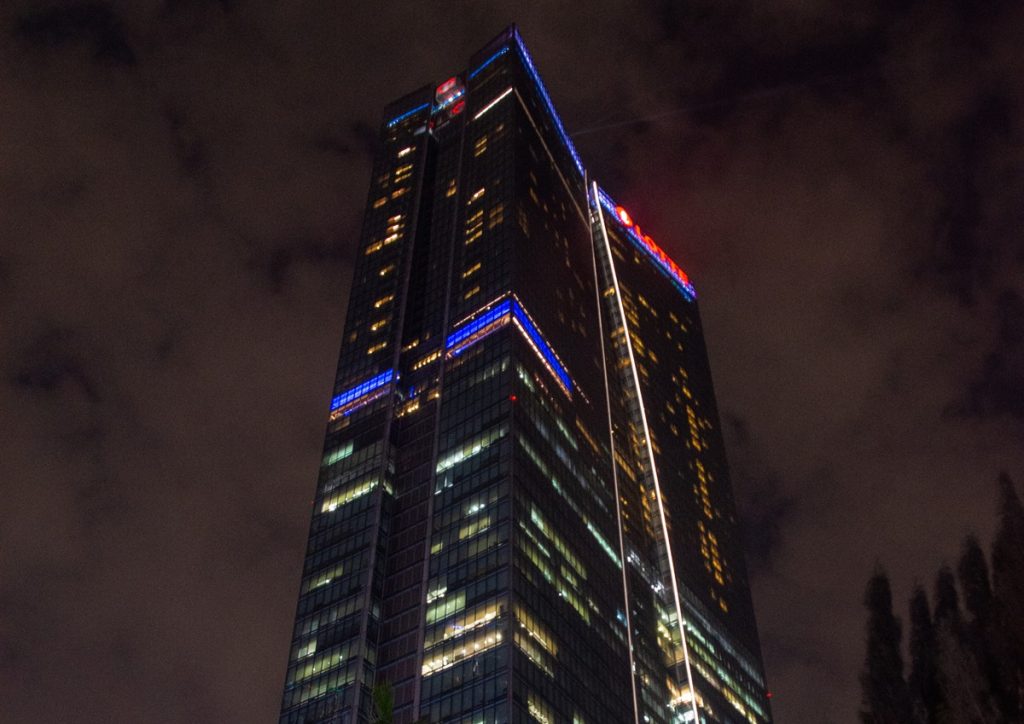
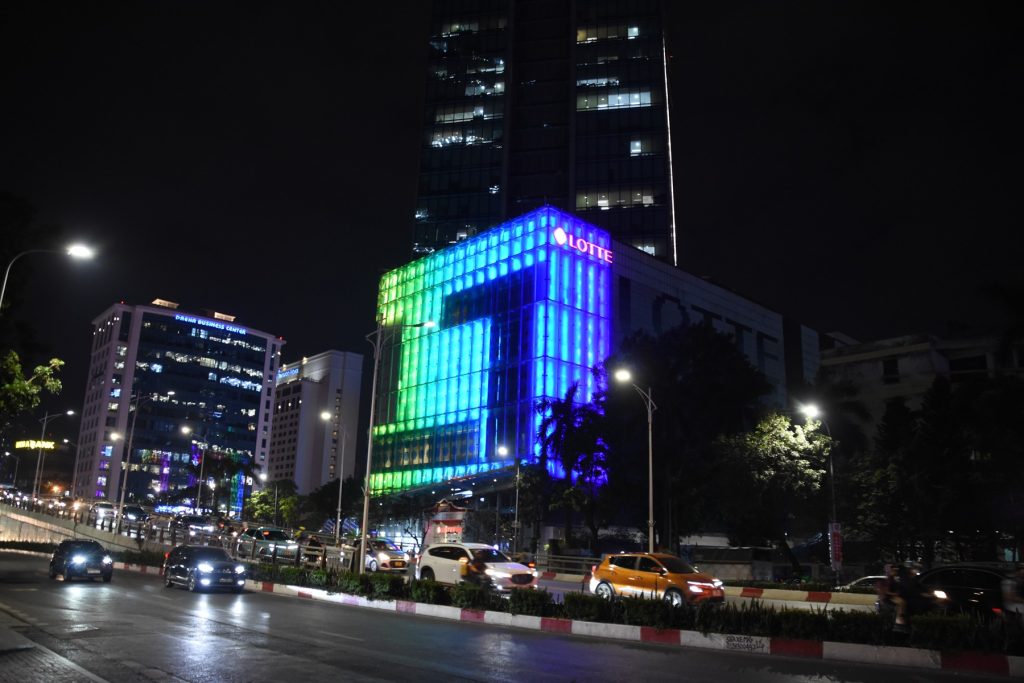
lined with modern buildings.
■ St. Joseph’s Cathedral
St. Joseph’s Cathedral is one of Hanoi’s representative Gothic architectural landmarks, with its spires and arched windows strongly reflecting the influence of the French colonial era. During the day, sunlight accentuates the building’s delicate and beautiful details. Cafes and craft shops scattered around the surrounding square offer visitors a peaceful and cultural experience, adding further depth to the scenery centered on the cathedral.
At night, the cathedral is illuminated with warm-toned lighting that enhances its solemnity and sacredness. The spires and window decorations stand out under the lighting effects, drawing the attention of visitors. However, the overall lighting of the square lacks cohesion. Light leaking from surrounding shops creates a cluttered impression, and the main lighting of the square relies heavily on large high color temperature floodlights, resulting in noticeable areas with insufficient brightness. Despite this, the light emitted by the cathedral itself carries a profound breath of history, leaving a deep impression on those who visit. Its silhouette against the night sky quietly colors Hanoi’s nightscape as a landmark symbolizing the city’s history and culture. (Jiang Kunzhi)
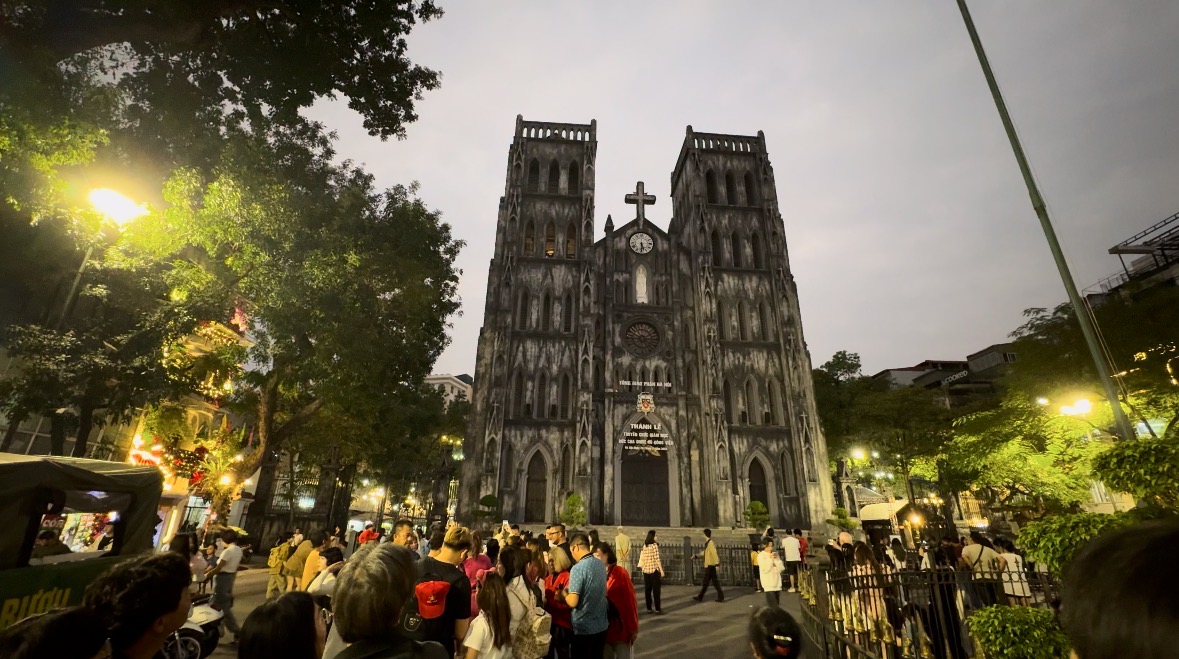
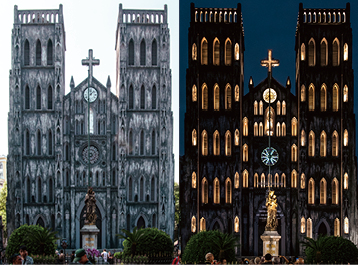
■ Summary
The charm of Hanoi’s nightscape lies in the contrast of light and shadow created by the fusion of historic landmarks and modern architecture. Historic buildings such as St. Joseph’s Cathedral and the Turtle Tower are illuminated with warm-toned lighting, evoking a solemn and profound atmosphere. Meanwhile, modern architecture symbolizes the city’s vitality with sophisticated designs and vibrant lighting. This blend creates a unique urban landscape where tradition and innovation coexist harmoniously.
The nightscape around Hoan Kiem Lake features a distinctive contrast between the tranquil lake surface and the bustling night market, showcasing the beauty formed by the interplay of natural and artificial light, delighting viewers. Neon signs and billboard lighting bring energy to the city but also highlight challenges such as light pollution and excessive illumination.
Hanoi’s nightscape reflects the city’s history and culture, with soft lighting quietly enhancing the buildings and offering visitors a serene nocturnal experience. (Liu Chuanyi)





